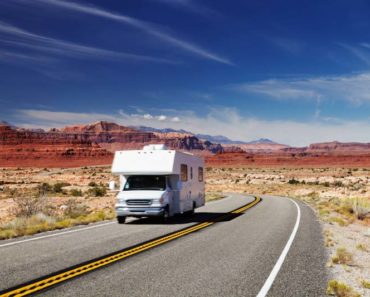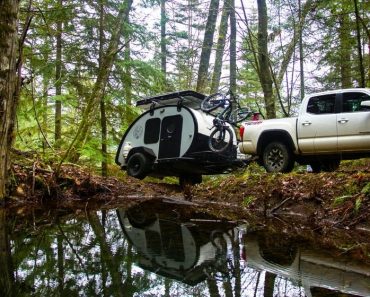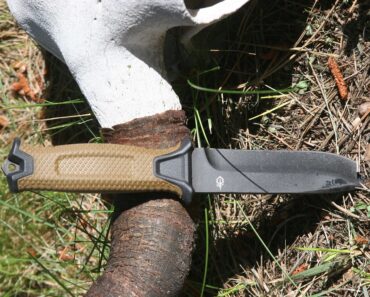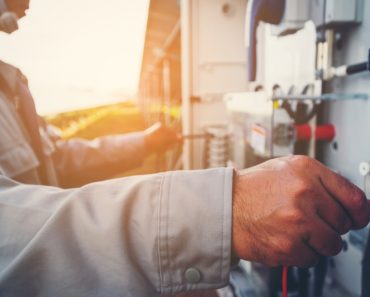Nothing makes a better prepper home than a homestead. What prepper doesn’t dream of picking up and moving out of the city to create their own little slice of paradise a little more off-grid to keep them and their family safe and secure should disaster strike?
However, there are still many things to consider when crafting a homestead to ensure it provides you with everything you’ll need in case something goes wrong and you need to hunker down for an extended period of time. Just because you choose to move to a more remote, rural location doesn’t mean your homestead will automatically provide you with all the necessities.
Choosing the Right Location for Your Prepper Homestead
Choosing the right spot for your homestead is a major part of the decision process. The location you choose, the land and what it provides, and nearby conveniences, can all play a role in how successful your homestead is. So keep the below factors in mind to make sure you are choosing the ideal location for you and your needs.
Climate
If you are considering crossing state lines and moving to another part of the country to build your homestead, climate is definitely something to keep in mind. If you plan to live off the land, you want to make sure that the climate in the area you are considering is conducive to growing crops, for example. Things like rainfall, snow, temperature, and natural disasters can all play a role in what kind of homestead you will have to build to survive.
Cost of Living
If you want to have a lot of land for your homestead, but you don’t have deep pockets, then you will need to consider moving to an area with a more affordable cost of living. Oregon and California, for example, have lots of beautiful locations with plenty of land, but the cost of living on the West Coast is very high compared to the national average.
If you choose somewhere more remote and in the countryside, you will also potentially have to drive long distances into town when you need things, which can contribute to your cost of living with gas prices.
Distance from Conveniences
Grocery stores, schools, gas stations, hospitals, and hardware stores are all modern conveniences that you might currently rely heavily upon but might not be as easily accessible depending on where you choose to create your homestead. If you have kids, for example, you’ll need to decide whether you will be homeschooling them or sending them to school, and the location you choose can play a role in that decision.
And what if someone at home gets hurt? How much first-aid experience do you have? If you aren’t great at handling emergency medical situations yourself, you might need to opt for a homestead that is still within easy access to a hospital or other medical facility that provides emergency services.
Utility Access
Will you need good phone reception or internet service on your homestead? Some remote locations don’t have the best reception or access to utilities, so keep this in mind. Also, if the power goes out in an emergency, you could be left for days without electricity in a more remote area.
If you do want to live more off-grid, you will need to adequately equip your homestead to handle these situations, such as having sources of backup power and plenty of food and water.
Enough Land
How much land your homestead provides is also an important factor to consider, especially if you plan to really live off the land. If you want to essentially have everything you need on your homestead without often having to leave, you will need plenty of land to plant crops for food. A small garden won’t really cut it if you end up needing to go months without access to outside resources.
A Water Source
When choosing a new location for your prepper homestead, having a natural water source nearby is also ideal. Having water on your property is best, but if you can find a spot that is at least nearby a groundwater source, that would also suffice. If city water goes down in an emergency, having easy access to water is essential.
Good Sunlight
How do you plan to power your homestead when the electricity gets cut off? Solar panels are a great solution for prepper homes in these situations. They enable you to use the sun as a source of power, and even if electricity doesn’t get cut off, using solar power can help you save money on your electric bills.
Good sunlight is also important for growing crops. So if you want to sustain your home without access to outside food and power, choosing a location that gets good sunlight is a must.
Defensible
Of course, no prepper home is complete without good defense and security. So when choosing your home, make sure the property is something you feel you can adequately defend. Does it have trees for privacy and security? How accessible is it to outsiders?
It’s also wise to consider the gun laws in the state you choose to live in. Some states have stricter gun laws than others, so if you plan to defend your home with guns, this is something to keep in mind.
Best States for a Prepper Homestead
You can really live in just about any state and make it work for you, but there are some states that are better than others based on things like climate, land, cost of living, and local laws. So make sure you’re fully prepared if you move across state lines to start building your prepper homestead. Every state has its own rules and regulations.
Some of the best states for preppers include:
- Texas
- Ohio
- North Carolina
- Maine
- Tennessee
- Montana
- Missouri
- Arizona
- Oregon
- Vermont
Securing Your Prepper Homestead
Once you’ve chosen the location for your new prepper home and moved in, it’s time to get to work and start securing your homestead. What security measures you need to take can depend on where exactly you are located. For example, if you choose an area with a low crime rate that is far away from others, you might not need to work as hard to defend it.
However, no matter the location, you should still put some effort into securing your home to protect yourself and your loved ones. Below are some tips for how to turn your home into a fortress:
- Use landscaping for more privacy — i.e., trees and hedges to shelter your home and block outsiders from easily looking in.
- Opt for motion-detecting lights and dogs for security — high-end security systems are nice, but they tend to run on electricity, which you might not have in an emergency. Motion-detecting lights are great because they don’t require as much power and only turn on when motion is detected on your property. Dogs are also great for this purpose because you certainly don’t need electricity to use them, and they have a keen sense of hearing to alert you to intruders.
- Use steel or steel-reinforced doors, heavy-duty mechanical locks, and high-quality windows to protect your homestead from intruders.
- Install a safe room where your family can hide if someone does manage to get inside your home.
- Avoid displays of wealth, as this can attract intruders.
- When away from home, especially at night or during trips, make your home look occupied using lights with timers and pausing your mail, so it doesn’t gather in your mailbox.
How to Make Your Prepper Home Feel Like a True Homestead
Simply buying a home with a lot of land somewhere in a remote, rural location does not automatically make it a homestead. Having a homestead that is ideal for a prepper depends on the effort and time you put into it. So, outside of choosing the right location and making your home secure, the additional tips below can help you make your prepper home really feel like a traditional homestead.
- Live off the land as much as possible. Grow lots of crops, raise some animals that can provide you with things like milk, eggs, and meat, harvest rainwater, and install solar panels for a natural source of power.
- Learn how to fix and make things yourself. A true homesteader, and prepper, is self-reliant and doesn’t need much help from outside resources. So having a workshop or tool shed on your homestead is ideal so you can learn to start making things yourself and fixing things without relying on buying new stuff or hiring maintenance services.
- Build a pantry and learn how to can and preserve food. Fresh food from crops and livestock is great, but you should also have a nice big pantry on your homestead for all the extra food supplies you’ll need to survive.
- Learn to disinfect and distill water in case city water gets shut off.
- Find a way to make a living from home. There are lots of things you can do to turn your homestead into a source of income, or you can find other remote-based work so you can truly live off-grid as much as possible and avoid having to drive into town. However, living in a more remote location and working from home can also affect your mental health as it means less socializing and human interactions. So make sure you don’t isolate yourself too much to avoid negatively impacting your well-being.
- Homeschool your kids.
- Rely on electricity as little as possible. For example, hand wash and hang dry clothes, use candles instead of lights, and use a gas-burning stove.
Wrapping Up
There is no one right way to craft a homestead. But the ultimate goal should be to live off the land as much as possible and create everything you need on your own without relying on outside resources. This not only helps you live more sustainably and connect with nature, but it is also ideal if you are a prepper trying to live more off-grid and keep yourself safe should disaster strike.
Just make sure you avoid common prepper mistakes, such as having little to no medical and first-aid knowledge, not having a way to generate power or communicate, and not knowing how to manage sanitation issues. Overall, you want to know as much as possible before building your homestead so you can support yourself and your family as much as possible should help not be available.




























